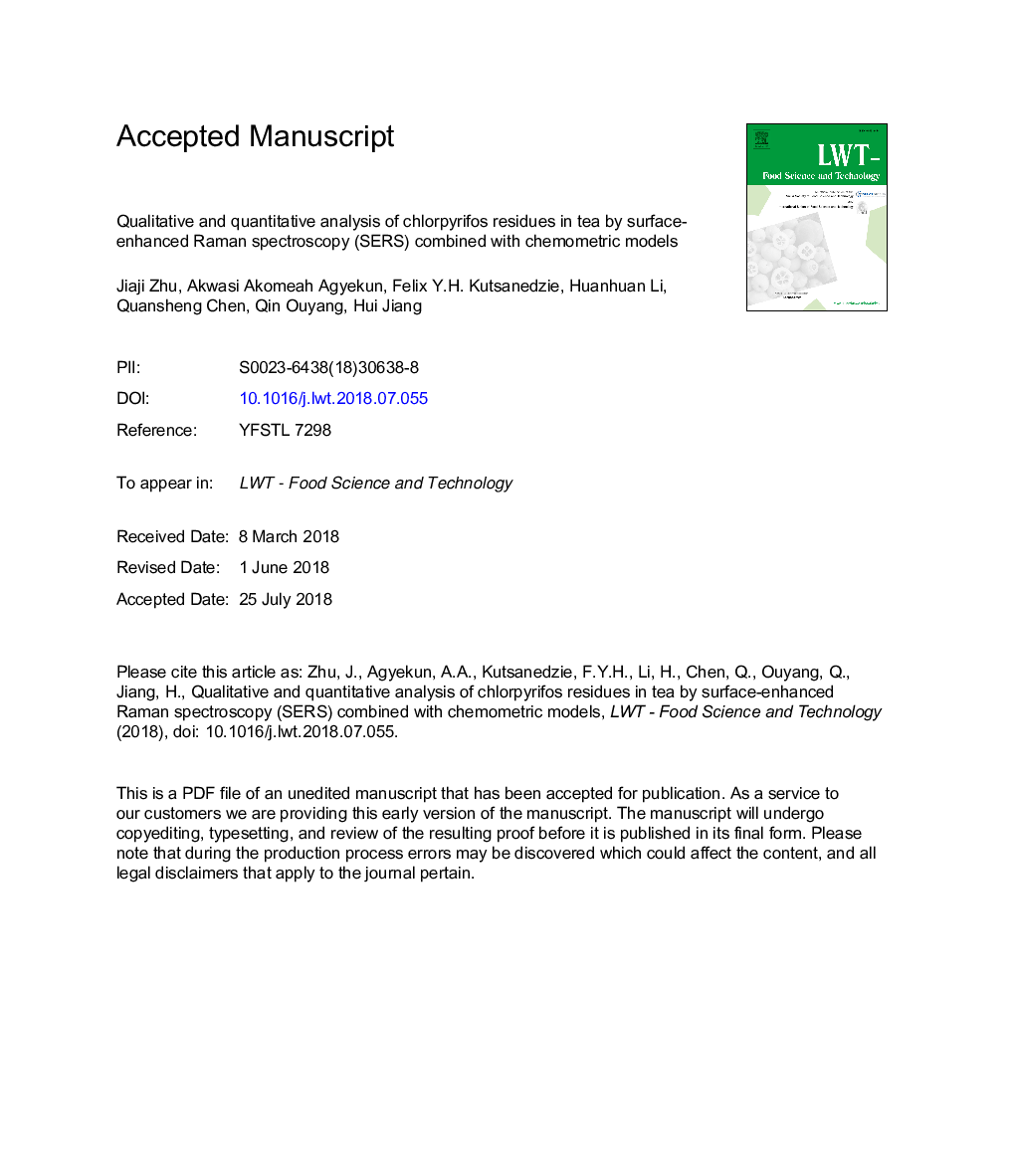| Article ID | Journal | Published Year | Pages | File Type |
|---|---|---|---|---|
| 8890321 | LWT - Food Science and Technology | 2018 | 36 Pages |
Abstract
Surface-enhanced Raman spectroscopy (SERS) combined with chemometric models were employed to develop a rapid, low-cost, and sensitive method for qualitative and quantitative analysis of chlorpyrifos residues in tea. Au@Ag nanoparticles (NPs) with high enhancement factor were synthesized and coupled with chemometric algorithms for SERS measurements. K-nearest neighbors (KNN) classification models gave the best performance model with high classification rates (90.84-100.00%) achieved. For the quantification models for predicting chlorpyrifos contents, the genetic algorithm-partial least squares (GA-PLS) models and synergy interval partial least squares-genetic algorithm (siPLS-GA) models applied to standard normal variate transformation (SNV) preprocessed training and validation data set showed better prediction performances with excellent regression quality (slopeâ¯=â¯0.98-1.00), higher correlation coefficient of determination (r2â¯=â¯0.96-0.98), and lower root-mean-square error of prediction (RMSEPâ¯=â¯0.29, 0.31) than other quantification models. Paired sample t-test exhibited no statistically significant difference between the reference values determined by GC-MS and the predicted values in most quantification models. The proposed method would be a more effective and powerful tool for classification and determination of chlorpyrifos (CPS) residues in tea samples.
Related Topics
Life Sciences
Agricultural and Biological Sciences
Food Science
Authors
Jiaji Zhu, Akwasi Akomeah Agyekum, Felix Y.H. Kutsanedzie, Huanhuan Li, Quansheng Chen, Qin Ouyang, Hui Jiang,
